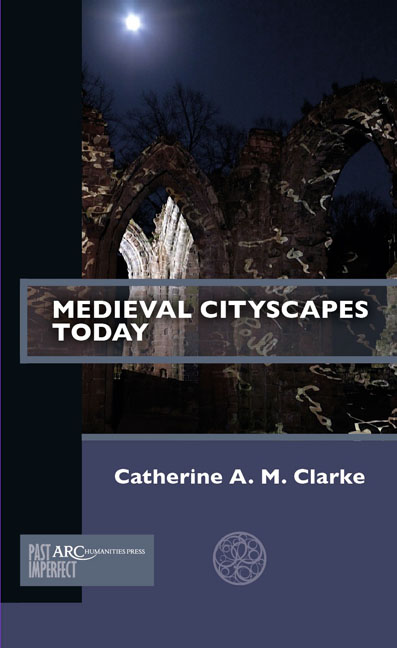Summary
This book uses new research to investigate the scholarly understanding, heritage management, and public interpretation of medieval cityscapes today. Drawing on two contrasting central case studies, it asks questions about approaches to medieval cityscapes in very different forms and contexts: where rich material survivals are still present in the urban landscape, associated with an established culture of her-itage tourism; and where the medieval urban environment is absent or invisible today. What research methods can scholars use to explore the medieval cityscape, in its varying forms? And what tools and techniques can enable us to engage wider communities with medieval cityscapes today?
Emerging technologies and expanding digital possibilities make these questions particularly timely and urgent today. New immersive technologies, augmented reality, and virtual historic environments are collapsing the established models and discourses of heritage research and practice, challenging us to think about place and the past in new ways. Where scholars and practitioners have relied on categories such as those of “tangible” and “intangible” heritage, new technologies instead posit an incipient, hybrid realm which merges the material, cultural, and imagined. What consti-tutes the medieval cityscape today? Is it a material phenomenon or can it be a virtual world? Is it a space of history, reality, or conceptual play? This book takes new technologies as a provocation to ask fundamental questions about how we should now understand and define historic environments in a digital age.
As well as confronting the implications of digital tools and technologies, this book also examines creative practice as a mode both for public interpretation, and for scholarly inquiry and exploration. The case studies at the core of this volume incorporate experimental, creative initiatives alongside traditional scholarly research methods in their engagement with medieval urban environments. How can projects such as a civic art commission, or development of a computer game enhance public understanding of the medieval cityscape today? And how can these approaches enlarge academic practice and prompt new questions or insights?
The mission of the “Past Imperfect” series ideally supports the aims of this study. Medieval Cityscapes Today addresses scholars across a range of disciplines—from history to archaeology to heritage science—as well as professionals in the heritage sector, creative practitioners, policy-makers, and others who are responsible for the conservation and development of our urban spaces.
- Type
- Chapter
- Information
- Medieval Cityscapes Today , pp. vii - viiiPublisher: Amsterdam University PressPrint publication year: 2019

